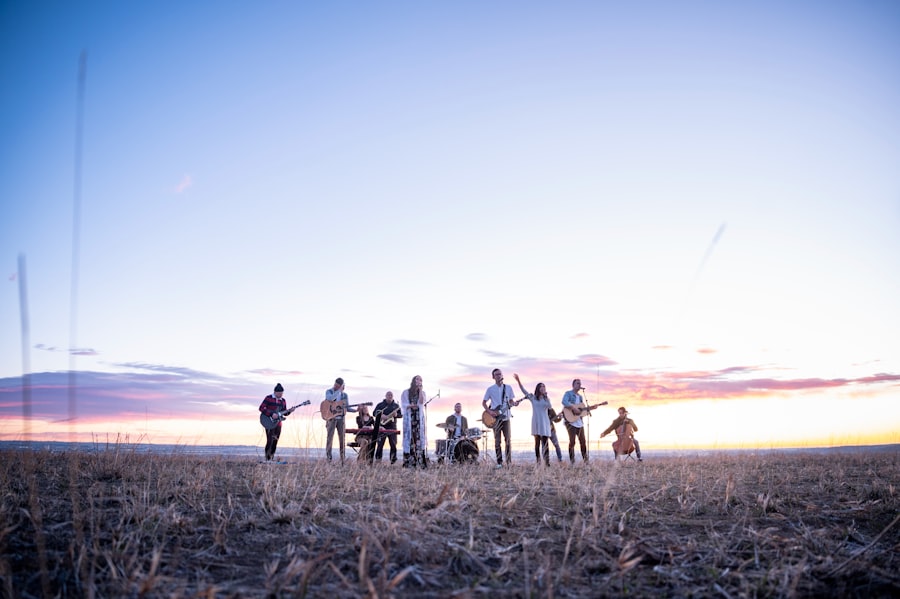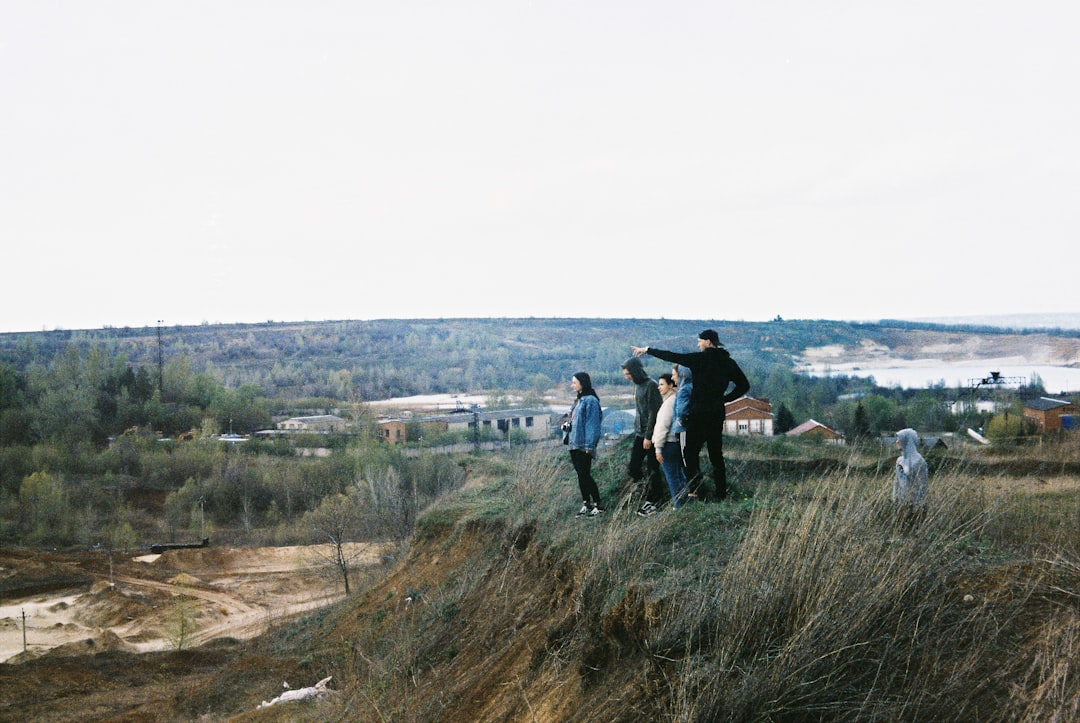The Great Plains, a vast expanse of land characterized by its rolling hills and agricultural heritage, has long been a cornerstone of American identity. However, in recent years, this region has witnessed a troubling trend: a significant exodus of young people seeking better opportunities elsewhere. This migration is not merely a fleeting phenomenon; it reflects deeper socio-economic issues that have been brewing for decades.
As young individuals leave their hometowns in search of employment, education, and a vibrant lifestyle, the implications for the Great Plains are profound and far-reaching. Understanding the reasons behind this demographic shift is crucial for grasping the future of the region. The departure of young people not only threatens the vitality of rural communities but also poses challenges to the agricultural economy that has historically defined the Great Plains.
As these young individuals seek their fortunes in urban centers, the question arises: what can be done to reverse this trend and revitalize the Great Plains? This article delves into the multifaceted factors contributing to this exodus and explores potential solutions to retain and attract young talent back to their roots.
Key Takeaways
- The Great Plains is experiencing a significant exodus of young people, leading to population decline and economic strain in rural communities.
- Decline in economic opportunities, particularly in agriculture, is a major factor contributing to the exodus of young people from the Great Plains.
- Urbanization and the appeal of city life, along with challenges in education and job opportunities, are also driving young people away from the Great Plains.
- Technology and automation play a role in the decline of jobs in the Great Plains, further contributing to the exodus of young people.
- Efforts to retain and attract young people to the Great Plains, as well as the importance of diversifying the economy, are crucial in addressing the exodus and creating economic opportunities.
The Decline of Economic Opportunities in the Great Plains
One of the primary drivers behind the migration of young people from the Great Plains is the decline of economic opportunities. Historically, agriculture served as the backbone of the region’s economy, providing jobs and stability for generations. However, as farming practices have evolved and mechanization has taken hold, many traditional agricultural jobs have diminished.
The rise of large-scale farming operations has led to fewer employment opportunities for young individuals who once aspired to work on family farms or local agribusinesses. Moreover, the diversification of job sectors has not kept pace with the needs of a modern workforce. Many young people find themselves facing limited options in terms of career paths, leading them to seek employment in urban areas where industries such as technology, healthcare, and finance thrive.
The lack of investment in infrastructure and business development in rural areas further exacerbates this issue, leaving young people feeling trapped in a cycle of limited prospects. As they witness their peers leaving for cities with more robust economies, the allure of urban life becomes increasingly difficult to resist.
Impact on Rural Communities: Population Decline and Economic Strain

The exodus of young people from the Great Plains has had a profound impact on rural communities, leading to population decline and economic strain.
This demographic shift not only affects local economies but also threatens the social fabric of these communities.
Schools face closures due to declining enrollment, local businesses struggle to survive with fewer customers, and essential services become harder to maintain. The economic strain is palpable; as young people leave, tax revenues decrease, making it challenging for local governments to fund public services. This creates a vicious cycle where reduced services further dissuade potential residents from moving to or staying in these areas.
The loss of community engagement and vibrancy is felt deeply by those who remain, leading to a sense of isolation and despair among residents. The challenge lies not only in reversing this trend but also in fostering an environment where young people feel empowered to build their futures within their hometowns.
Factors Contributing to the Exodus of Young People
| Factors | Contributing to Exodus of Young People |
|---|---|
| Lack of Job Opportunities | High unemployment rates and limited career prospects |
| Cost of Living | Expensive housing, education, and healthcare |
| Quality of Life | Desire for better work-life balance and access to amenities |
| Education | Seeking better educational opportunities and resources |
| Community Engagement | Desire for stronger social connections and civic involvement |
Several interrelated factors contribute to the exodus of young people from the Great Plains. One significant aspect is the perception that opportunities for personal and professional growth are limited in rural areas. Many young individuals aspire to pursue higher education or specialized training, but access to quality educational institutions can be lacking in remote regions.
This gap often leads them to seek opportunities in urban centers where universities and vocational schools offer a wider array of programs. Additionally, social factors play a crucial role in this migration pattern. Young people are increasingly drawn to vibrant social scenes, cultural amenities, and diverse communities that urban areas provide.
The desire for connection and engagement with peers can outweigh the comforts of home, especially when local options for entertainment and socialization are scarce. As they navigate their formative years, many young individuals prioritize experiences that foster personal growth and fulfillment—elements that are often more readily available in cities than in rural settings.
Agriculture and the Changing Demands of the Industry
The agricultural landscape in the Great Plains has undergone significant transformation over recent decades, impacting job availability and economic stability. With advancements in technology and farming practices, many traditional roles have been replaced by automation and large-scale operations. While these changes have increased efficiency and productivity, they have also led to a reduction in labor-intensive jobs that once provided livelihoods for countless families.
Moreover, the demands of modern agriculture have shifted towards specialization and innovation. Young people entering the workforce are often required to possess advanced skills in technology, data analysis, and sustainable practices—areas where many rural educational institutions may not provide adequate training. As a result, aspiring farmers or agribusiness professionals may feel ill-equipped to meet industry demands, prompting them to seek opportunities elsewhere where they can acquire the necessary skills and knowledge.
The Rise of Urbanization and the Appeal of City Life

Urbanization has become a defining trend in contemporary society, with cities offering an array of opportunities that rural areas struggle to match. The appeal of city life is multifaceted; urban centers boast diverse job markets, cultural experiences, and social networks that attract young individuals seeking excitement and growth.
In cities, young people can access a plethora of resources—from networking events to entrepreneurial incubators—that facilitate career advancement and personal development. The presence of cultural institutions such as museums, theaters, and music venues further enriches urban life, providing avenues for creative expression and social interaction. As young individuals weigh their options, the allure of city life becomes increasingly compelling, leading them to leave behind their rural roots in pursuit of a more dynamic existence.
Education and Job Opportunities: Challenges for Young People in the Great Plains
Education plays a pivotal role in shaping the future prospects of young people in the Great Plains. However, many face significant challenges when it comes to accessing quality education and job opportunities within their communities. Rural schools often grapple with limited funding, resulting in fewer resources for students and educators alike.
This can lead to disparities in educational outcomes compared to urban counterparts who benefit from more robust support systems. Furthermore, even when young individuals pursue higher education or vocational training outside their hometowns, they may encounter difficulties returning home due to a lack of available jobs that match their qualifications. The disconnect between educational attainment and local job markets creates a frustrating cycle where talented individuals feel compelled to remain in urban areas rather than returning to contribute to their communities.
Addressing these educational challenges is essential for fostering an environment where young people can thrive both academically and professionally within the Great Plains.
The Role of Technology and Automation in the Decline of Jobs
The rise of technology and automation has significantly altered the job landscape across various industries, including agriculture—a cornerstone of the Great Plains economy. While technological advancements have improved efficiency and productivity within farming practices, they have also led to a decline in traditional labor-intensive jobs that once provided stable employment for many residents. As machinery replaces manual labor on farms, fewer workers are needed to maintain operations.
This shift towards automation extends beyond agriculture; it permeates various sectors within rural economies. Small businesses may struggle to compete with larger corporations that leverage technology for streamlined operations, resulting in job losses for local workers. As young individuals witness these changes unfold, they may feel disillusioned by the prospects available within their communities, prompting them to seek employment opportunities elsewhere where innovation is embraced rather than resisted.
Efforts to Retain and Attract Young People to the Great Plains
Recognizing the challenges posed by youth migration, various stakeholders have begun implementing initiatives aimed at retaining and attracting young people back to the Great Plains. Community leaders, local governments, and organizations are collaborating on strategies that promote economic development while enhancing quality of life for residents. These efforts often focus on creating vibrant downtown areas with recreational facilities, cultural events, and entrepreneurial support systems that appeal to younger demographics.
Additionally, programs aimed at improving access to education and training opportunities are gaining traction across rural communities. By partnering with local colleges or vocational schools, towns can offer specialized programs tailored to meet industry demands while equipping young individuals with valuable skills needed for success in today’s job market. Such initiatives not only foster economic growth but also instill a sense of pride among residents who see their communities actively working towards a brighter future.
The Importance of Diversifying the Economy in the Great Plains
To combat youth exodus effectively, diversifying the economy within the Great Plains is paramount. Relying solely on agriculture leaves communities vulnerable to fluctuations in market demand or environmental challenges; thus, fostering new industries can create sustainable job opportunities for residents. By investing in sectors such as renewable energy, technology startups, or tourism development, rural areas can cultivate a more resilient economic landscape that attracts both businesses and talent.
Moreover, diversification can enhance community engagement by encouraging collaboration among various sectors—agriculture can intersect with technology through precision farming initiatives or sustainable practices that appeal to environmentally conscious consumers. By embracing innovation while honoring traditional values rooted in agriculture, communities can create an environment where young people feel empowered to contribute meaningfully while building fulfilling careers.
Addressing the Exodus of Young People and Creating Economic Opportunities
The exodus of young people from the Great Plains presents significant challenges but also offers an opportunity for renewal and growth within these communities. By understanding the underlying factors driving this migration—such as economic decline, limited job prospects, educational disparities, and changing industry demands—stakeholders can develop targeted strategies aimed at reversing this trend. Efforts must focus on creating vibrant communities that offer diverse economic opportunities while fostering an environment conducive to personal growth and fulfillment.
By investing in education, promoting entrepreneurship, diversifying local economies, and enhancing quality of life through cultural initiatives, rural areas can become attractive destinations for young individuals seeking meaningful careers without sacrificing their connection to home. Ultimately, addressing this issue requires collaboration among community leaders, businesses, educators, and residents alike—working together towards a shared vision for revitalizing the Great Plains while ensuring that future generations have every opportunity to thrive within their hometowns.
The Great Plains, once a thriving region for agriculture and rural communities, has seen a significant outflow of young people in recent years. This trend is driven by a combination of factors, including limited job opportunities, lack of access to higher education, and the allure of urban areas that promise better career prospects and vibrant social scenes. An insightful article on this topic can be found on MyGeoQuest, which delves into the socio-economic challenges faced by the Great Plains and explores potential solutions to retain the younger population. For more information, you can read the full article here.
WATCH NOW! Why America’s Heartland Is Disappearing Fast
FAQs
Why do young people leave the Great Plains?
Young people leave the Great Plains for a variety of reasons, including limited job opportunities, a lack of cultural and recreational amenities, and the appeal of larger cities with more diverse populations and career prospects.
What are the job opportunities like in the Great Plains?
Job opportunities in the Great Plains can be limited, particularly in rural areas. Many young people may find it challenging to pursue their desired career paths or find employment that offers competitive wages and benefits.
Are there cultural and recreational amenities in the Great Plains?
While the Great Plains offer natural beauty and outdoor recreational opportunities, some young people may feel that there is a lack of cultural amenities, entertainment options, and diverse social experiences compared to larger urban areas.
What are the demographics of the Great Plains?
The Great Plains region is known for its predominantly rural and agricultural communities, with smaller towns and cities. This demographic makeup may not appeal to some young people seeking a more urban or diverse environment.
What are the pull factors for young people leaving the Great Plains?
Pull factors for young people leaving the Great Plains may include the allure of larger cities with more job opportunities, cultural diversity, and a wider range of recreational and social activities. Additionally, access to higher education and career advancement opportunities may be more readily available in urban areas.
